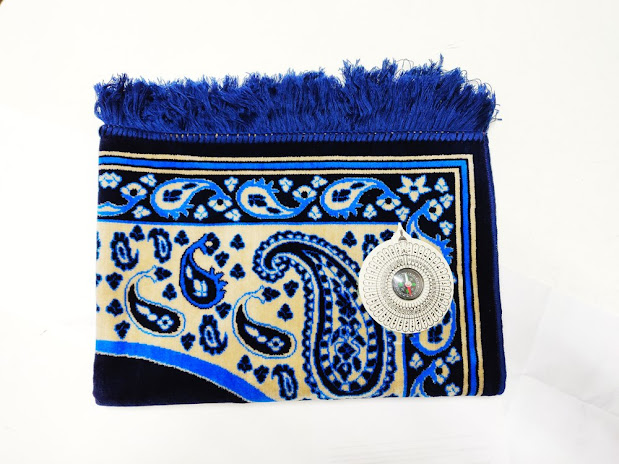Prayer Rugs - A Brief Overview
My Salah Mat is an award-winning prayer mat used to teach kids how to do the traditional Muslim prayer in an enjoyable and educational way. The interactive prayer rugs is touch-sensitive and also have pre-recorded educational sounds, like prayer times, to show the sound, like prayer words, du'as, say fards, and more. It will teach kids about the different times of prayer and how to position themselves for praying, as well as recite ducats and say prayers. The mat has multiple colors and styles to choose from and even has a "Prayer Time" feature to show the time of prayer.
I
have been designing prayer rugs for kids and adults for over 5 years. During
that time I have learned a lot about both prayer rugs and how they are made. In
this article, I'm going to share some of the materials used for prayer rugs.
First,
the material used to make kids prayer mat is called prayer matting. This is made
from a blend of thick cotton, polyester, and a special vinyl. The vinyl is
thick and flexible while allowing the yarn to slip through easily, making it
easy to place prayer matting on a hard surface. The yarn that is used is very
soft and silky, making it ideal to place on bare feet. Some people who use this
type of material have described it as "awesome." Another great thing about
it is that the feet location does not stick out, as it usually does with
standard prayer mats.
Second,
another important part of prayer rugs is what the actual mat is called. The
terminology for a typical Islamic prayer mat is "takfir" or
"rag." This is where the prayer cloth is laid flat on the ground,
covered in prayer mats. It has a small lip on each corner so that when the
worshipper kneels down to pray he can rest his hands on top of them and stay
connected to them. It is also important to note that the prayer mat can
sometimes also be called "al-mal" which means face to face.
Third,
the prayer mats come in several different styles. They can be flat, or they can
also be raised. Some prayer mats are flat but come with a "zippered"
corner piece. Then there are also prayer mats that can be folded in half but
come with no other features.
Fourth,
there are several different styles of prayer rugs. The most common is the
Urthmat (or Qalim) prayer mat. A Urthmat prayer rug is used for quranic and
Islamic prayers, as well as many other types of Muslim prayers.
Fifth,
there are also a few special prayer mats that are exclusively for Muslims. One
such drug is the "Hijab Rugs." These prayer mats were originally
created for Jewish people, as a way to keep their head covered during prayer.
However, after the destruction of the Jews in 70 A.D., the Hijab Rugs was used
by Muslims as a way to safeguard themselves from evil. In fact, many mosques
are still located in areas with Jewish populations.
Sixth,
there are special prayer mugs. Prayer mat for kids and prayer mats are great ways to
make an inspirational statement about one's faith. They can also be used to
show someone where they should place their hands during prayer. Some mugs have
touch-sensitive pads enabling someone to simply tap them during their prayers or to feel a certain prayer position when using them. Therefore, they can
provide a visual reminder that someone places their hands on during a specific
prayer position.
Seventh,
there are also prayer rugs that are imprinted with the face of Islam's prophet
Muhammad (SAW), as well as with images portraying him and his companions. These
can be a great way to display a person's devotion to religion. Some of
these prayer rugs are large, depicting multiple characters, while others are
small, with only one character. Others still may be irregularly shaped. The
size of a prayer rug is often determined by the exact area in which it is to be
placed.
Lastly,
there are prayer mats that are larger and round than the traditional prayer
mat. These mats, called jambi mats, have multiple uses, as they can be used to
sit on as well as stand on. They are also known as prayer rugs, as they
resemble the prayer mat. These are used most commonly in Africa, as well as in some parts of Asia and other Muslim countries.
Praying rugs are certainly not required for every Muslim to use during their daily
prayer routine. However, many Muslims prefer to use them, as it allows them to
focus exclusively on their prayer, rather than focusing on their feet or other
objects. It can truly be a matter of personal preference, but either way, a
prayer mat is an essential part of many bulimic traditions.





Comments
Post a Comment